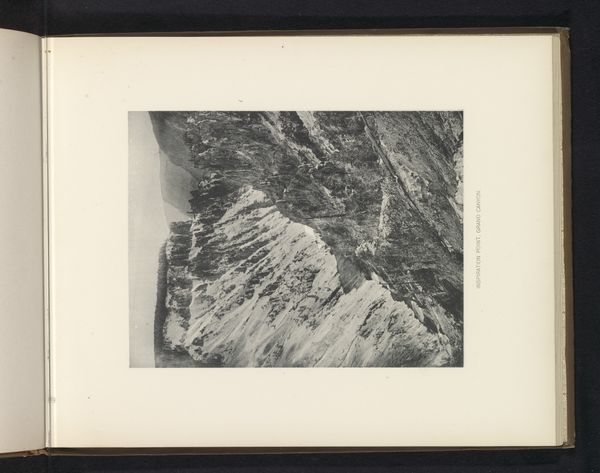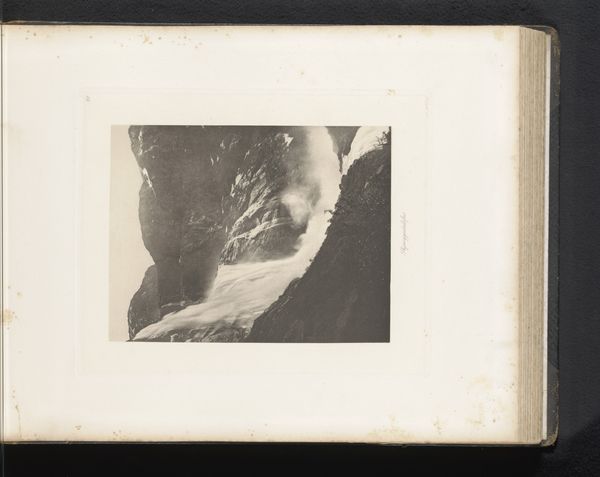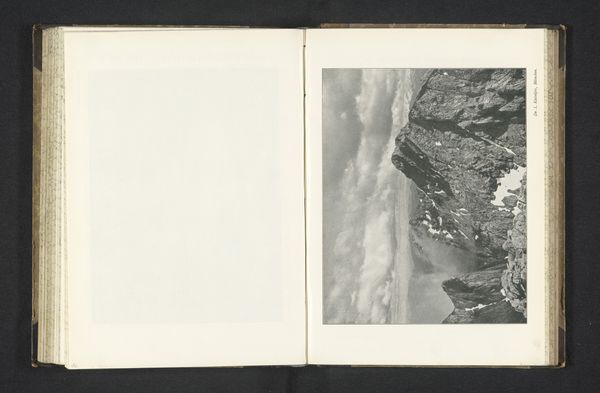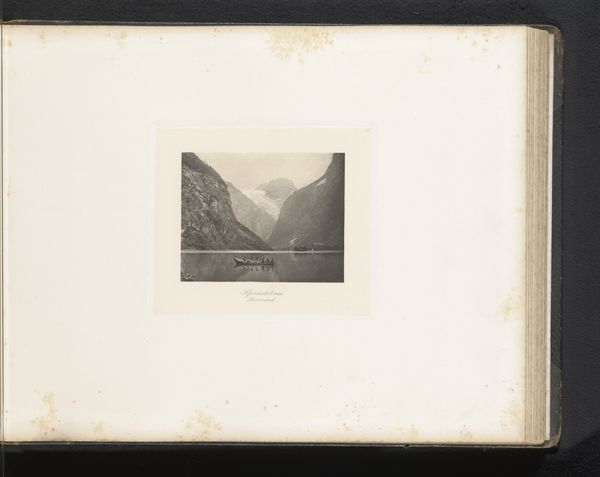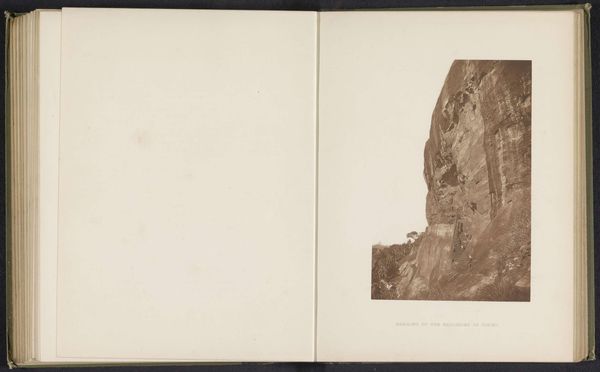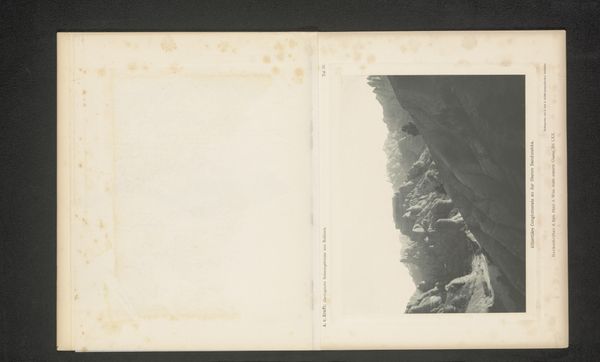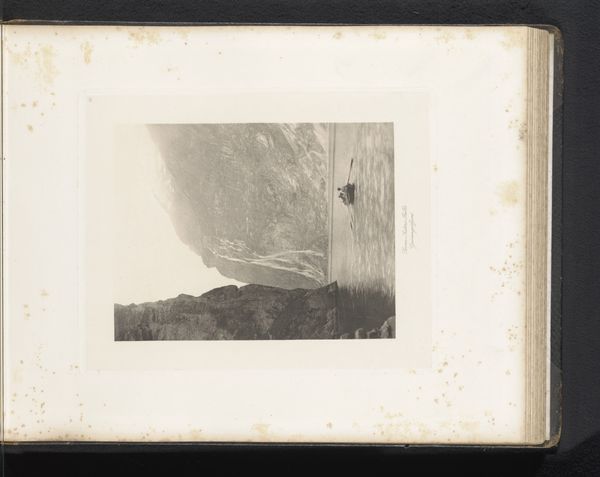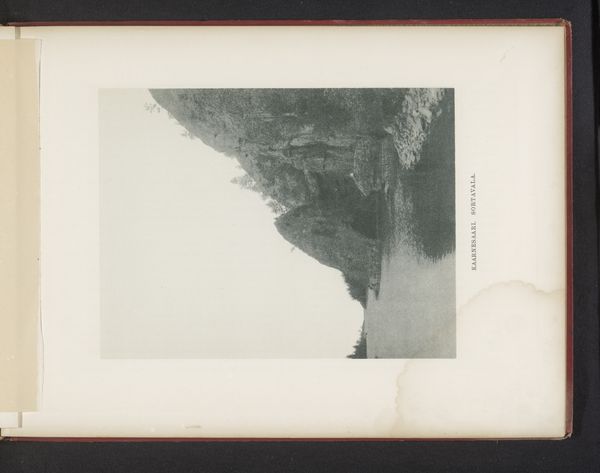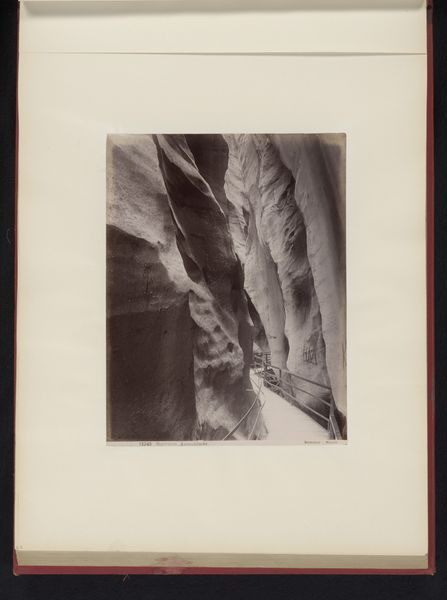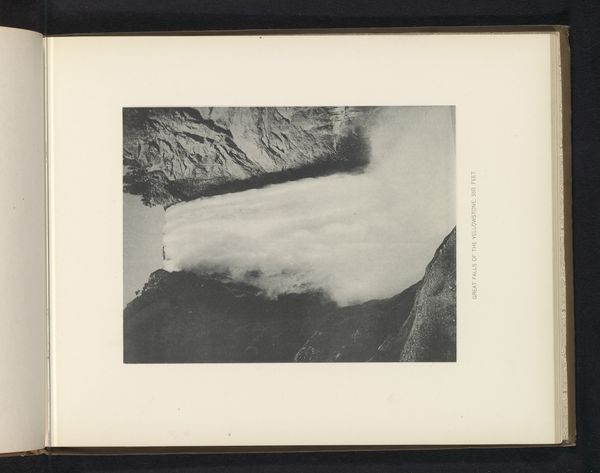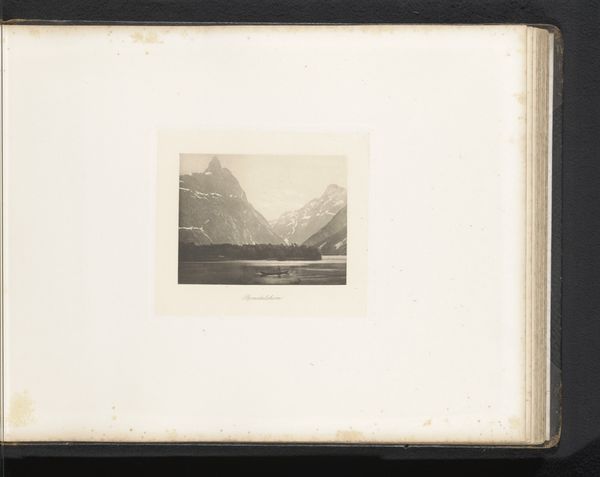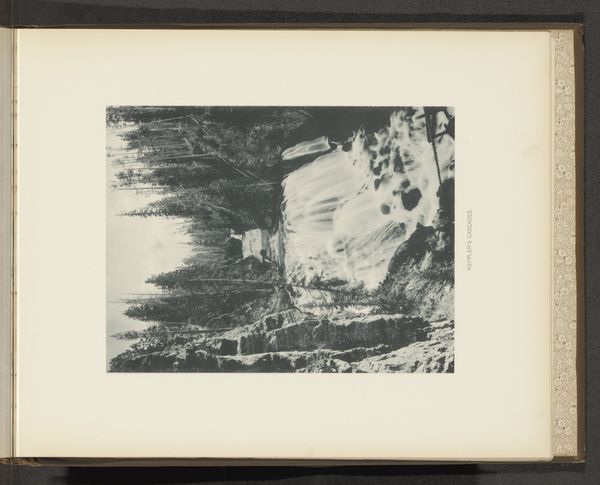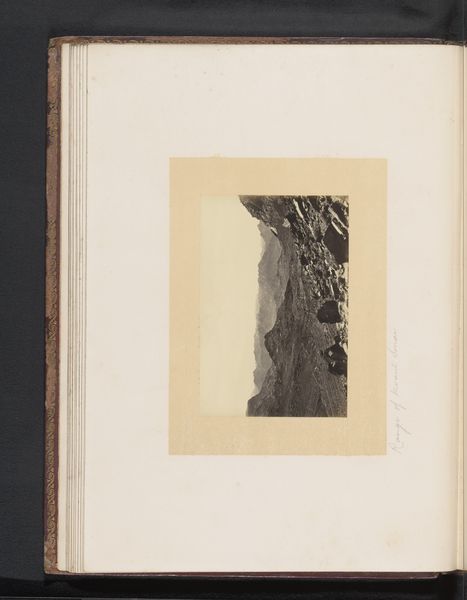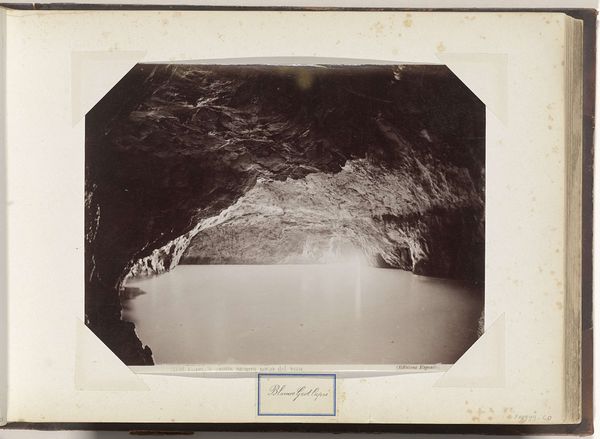
photography, gelatin-silver-print
#
photo of handprinted image
#
toned paper
#
muted colour palette
#
landscape
#
white palette
#
photography
#
gelatin-silver-print
#
realism
Dimensions: height 198 mm, width 144 mm
Copyright: Rijks Museum: Open Domain
Curator: What strikes me most immediately about this work, "Gezicht op de Supphellebreen," or "View of the Supphellebreen Glacier," is its somber, almost ghostly presence. Editor: Yes, there's a haunting quality to it, certainly enhanced by the muted tones and the inherent stillness of gelatin-silver prints from before 1893. But that stillness, that apparent capture of an unmoving scene, invites reflection on themes beyond the aesthetic. Curator: Precisely. Glaciers, like the Supphellebreen captured by Paul Lange, carry significant cultural weight, representing not only natural majesty but also serving as potent symbols of time, memory, and even impending loss. Editor: Indeed. Looking at it now, especially knowing how rapidly glaciers are receding due to climate change, transforms this from a mere landscape into a document of environmental witness, and the potential cultural trauma associated with environmental loss. Curator: And that photographic process itself. Gelatin-silver gives a tactile quality, doesn’t it? Almost like a veil between us and this scene, suggesting a glimpse into the past and inviting meditation on how we remember, how we preserve memory through images. Editor: I’d argue further that the choice to capture such a subject photographically, especially back then, democratizes the experience of "nature." Rather than just a painting only afforded by the elite, photographic prints made scenes accessible, enabling reflection upon humanity’s relationship with the land. Who had access to these images then also tells an important story. Curator: You've reminded me of something that's only lately emerged with scientific rigor, an important connection between cultural and environmental memory—and how they are both implicated when we stand here today and look at a receding glacier captured on a fragile medium. Editor: A poignant example indeed, prompting a broader intersectional dialogue—spanning identity, social justice, and environmental politics—especially when considering marginalized communities and their deep ties to land increasingly under threat. This gelatin-silver print reminds us there’s more to the vista than pretty picture postcards. Curator: Perhaps by examining what has vanished and is vanishing we may, through images, still call up action, empathy, perhaps a pathway for remembering together, creating new symbols. Editor: Let's hope so; viewing Lange's vista through an activist lens underscores how acts of documentation can, and maybe should, also function as an incitement to action.
Comments
No comments
Be the first to comment and join the conversation on the ultimate creative platform.
